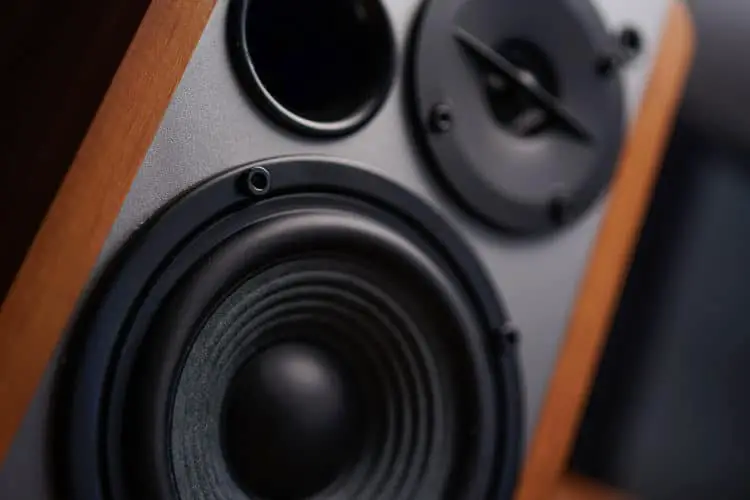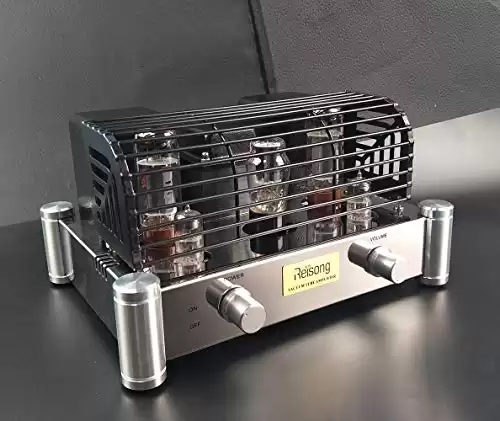If you have four speakers to connect to a two-channel amp, it might feel like you need to change your equipment setup.
Do you need a four-channel amp for four speakers?
How you approach this situation depends on the speakers and the amplifier. Their impedance levels and limits dictate how you can achieve a positive outcome.
All amps have a minimum and maximum impedance level that you must maintain to achieve a successful outcome.
How to Connect 4 Speakers to a 2-Channel Amplifier
You can connect four speakers to a two-channel amp through in-series or in-parallel connections. To determine the method, check the ohms measurement for the amp and speakers. If two speakers added together are less than the amp, you can wire in series.
You can quickly determine the maximum and minimum impedance levels on your amp by referring to the owner’s manual or an online specs table. It will display as an ohm measurement in this paperwork.
Once you have that information, it is time to gather the impedance of the speakers.
Most of them have labels on the physical unit that tell you this information, but you might need to refer to your manual.
When the impedance levels of two speakers together are less than the amp’s ohm measurement, you can wire the left and right sides in series.
If the impedance levels add up to an ohm figure higher than what your amp supports, you must multiply the numbers of the two speakers.
Once you have that number, you’ll need to divide it by the figure you got by adding them together.
If the answer to that equation falls within the impedance guidelines for your amp, you can wire the speakers using the in-parallel method.
Should the number be above the impedance rating, you’ll need to find different speakers to use with your amplifier.
Solid State Amps vs. Tube Amps: Which Is Better?
One variable to consider when calculating how many speakers you can use with your system depends on the amp construction you have.
Two different options are currently available. Your system might have a solid-state amp or a tube amplifier.
What makes the solid-state amps challenging to manage for a multi-speaker installation is their power rating.
That figure adjusts as the impedance changes. That means you can get more power with a lower impedance, potentially affecting an in-parallel wiring scheme.
With a tube amplifier, the power ratings will not change when the impedance receives an adjustment.
That means you don’t receive a power advantage or disadvantage with this equipment for in-series or in-parallel schemes, making it a more versatile installation for some users.
How to Wire Speakers Using the In-Series Method
If you can wire your four speakers to the two-channel amp using the in-series method, these steps will help you accomplish that task successfully.
- Connect a wire from the amplifier’s left-side positive terminal to the positive terminal on one of your left speakers.
- Connect a wire from the first left speaker’s negative terminal to the positive terminal on the second speaker.
- Route a third wire from the second left speaker’s negative terminal to the left-side negative terminal on your amplifier.
- Repeat steps 1-3 to add the right-side speakers to your setup.
| Pros of Having a Series Circuit | Cons of Having a Series Circuit |
| The setup allows the amplifier to run more efficiently or with less heat because it increases the equipment’s overall resistance. | When one connection fails, it can cause all of the speakers to stop working. |
| Each speaker receives a specific percentage of the amplified output. | The sounds coming from the speaker may feel dull or muted. |
| You receive a stronger bass EQ with an emphasis on the lower frequencies. | Higher frequencies tend to get lost when using this connection. |
How to Wire Speakers Using the In-Parallel Method
When you must use the in-parallel method for connecting four speakers to a two-channel amplifier, you’ll want to follow these steps to finish the installation.
- Connect the left-side positive and negative amplifier terminals to the same terminals found on the first left speaker.
- After making the first connection, route another two wires from the SAME amplifier terminals to the second left speaker.
- Repeat steps 1-2 for the right-side speakers.
When you must use this method for wiring your speakers, it is critical to create a clean connection. If the wires cross within the terminal, you might not receive the reception you want.
| Pros of Having a Parallel Circuit | Cons of Having a Parallel Circuit |
| When one connection fails, the other three speakers can continue operating with the amp’s help. | If a short circuit occurs within the setup, the current changes can cause heat to develop with your installation. |
| Lower impedance ratings create a higher acoustical output. | You must get the load impedance to a minimum of 2 ohms whenever possible, or the lowest setting your amp supports. |
| The speaker output can increase because the amp’s power output does the same. |
What Are the Best Stereo Amplifiers to Use Today?
If you need a stereo amplifier for your speaker setup, you’ll want to consider these products to enhance your audio system.
1. Benchmark Media Systems AHB2
This amplifier features THX Achromatic audio amp technology to rival the efficiency of Class-D designs while giving you the performance of a professional product.
The power supply on this unit is remarkably quiet, and it features passive cooling technologies to ensure you can get all-day play.
It also provides feed-forward error corrections with an input impedance of 20 ohms to give you added versatility.
If you want the easiest amplifier to use with a multiple speaker setup, you won’t get a better outcome than what comes with this product.
Although it is more of an investment than other models, the long-term benefits are worth the price.
2. Reisong A10 EL34 Tube Amplifier
If your bookshelf speakers have an 89 dB sensitivity or greater, you’ll enjoy what this amplifier provides for your setup.
The manufacturing process uses manual welding to create the perfect audiophile experience, while the vintage design adds a decorative element that serves as a conversation starter.
It features a frequency response of 20 Hz to 28 kHz while delivering an 8-ohm output impedance.
The audio quality it delivers is rich and warm, but it is a heavy unit. You’ll need to do the setup work with the tubes.
3. Dared MP-5BT Vacuum Tube Amplifier
If you prefer an affordable tube-based amplifier experience, this model delivers an outstanding result.
This amp has been available for approximately 20 years with various design tweaks, making it one of the industry’s most consistent items today.
Not only is it a visually stunning piece, but it also comes with a gold finish, wood panels, and a lacquered topcoat.
This amplifier offers 25w per channel, using solid-state components with a tube delivery system for a hybrid result.
It provides an 8-ohm output impedance, Bluetooth support, and less weight than comparable models.
What Should I Expect to Pay for a Great Amp?
If you want to connect four speakers to a two-channel amp, you’ll need a minimum 8-ohm rating to achieve a positive result.
You’ll find it is much easier to achieve the installation you want with a 16-ohm unit.
Most amplifiers that support high-quality sounds are in the $200 to $500 price range. Although cheaper units are sometimes available, you don’t always have enough power to share with the structure.
When you want the most powerful solutions, anything over 16 ohms is usually $750 or higher. Once you go above the 20-ohm level, you can expect to pay $2,000 to $4,000 for the best units in the industry today.
If you want a top-of-the-line model with unconditional support and flexibility, you can expect to pay $10,000.
What Is My Best Solution for Wiring My Speakers?
When evaluating in-series or in-parallel connections for your speakers and amp, the best solution is the one that works for your needs.
You rarely get to choose either option. It’s either the series or the parallel approach, which means you must take the path given to you by the equipment.
When you try to use the opposite method than the correct one, the chances increase that you’ll end up frying the amplifier.
That’s why it is essential to go through the equations to determine what ohm rating your amp supports.
If you have a 16-ohm amp with four speakers to connect, you could successfully wire four 4-ohm units to your system.
When it is a 5-ohm speaker (20-ohm total), you’d need to calculate for the in-parallel wiring instead.
When you take the time to make these calculations, you can increase the speaker number your system uses.
Any number can get linked utilizing this technique, assuming that the total load impedance equivalency is somewhere between 2-16 ohms.
Most amplifiers cannot support higher than 16 ohms right now.




